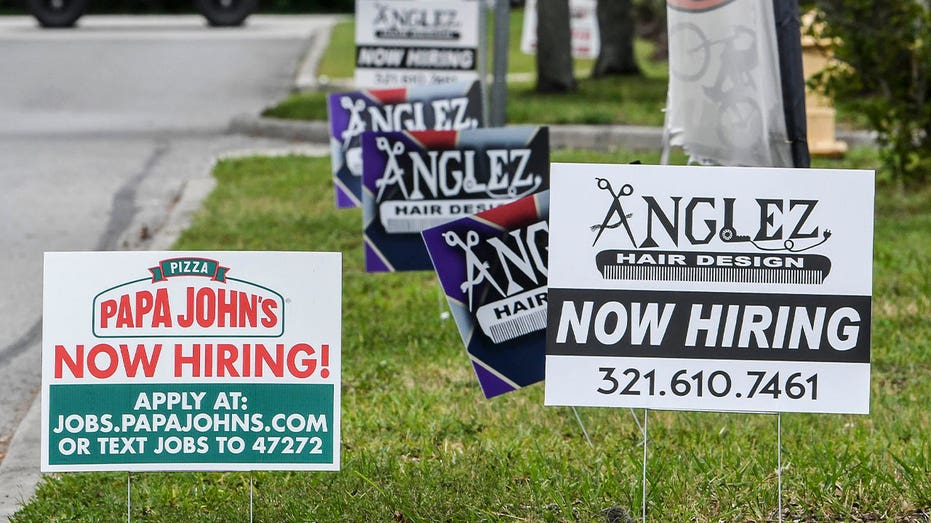US durable goods orders slip in February, marking first decline in 5 months
Jobless claims fell to lowest level since 1969
Rate hikes a 'good story' for the economy, markets: Analyst
Etoro U.S. investment analyst Callie Cox provides insight on the Federal Reserve's rate hike on 'Making Money.'
Orders at U.S. factories for long-lasting goods fell more than expected in February, snapping a months-long streak of increases and business investment as manufacturers confronted a worsening supply chain crisis.
Bookings for all durable goods – products that are intended to last at least three years – fell 2.2%, the first decline in five months, the government reported on Thursday. Economists surveyed by Refinitiv forecast a 0.5% decline.
INFLATION BREAKDOWN: WHERE ARE PRICES RISING THE FASTEST?
Passenger planes and autos – volatile measurements that tend to swing sharply month to month – accounted for the decline. A more precise measure of demand that excludes transportation and military hardware, known as core orders, fell 0.3% in February.

Machines work on a Ford vehicle assembly line at Ford's Chicago Assembly Plant in Chicago. U.S. manufacturing retreated again in April, a victim of economic fallout from the coronavirus outbreak. (AP Photo/Amr Alfiky, File / AP Newsroom)
"It’s still too early to determine the impact the war in Ukraine will have on global supply chains, which will surely be present in the March numbers released next month," said Peter Essele, head of portfolio management for Commonwealth Financial Network. "Until then, it’s prudent to take a wait-and-see approach rather than move toward safety assets at this time, as most economic indicators are still in robust territory."
In other economic news, the government also reported that the number of Americans filing for jobless benefits fell more than expected last week amid elevated business demand for workers and easing COVID-19 cases nationwide.

Papa John's Pizza and Anglez Hair Design have multiple signs around the businesses looking for employees. (Craig Bailey/FLORIDA TODAY via USA TODAY NETWORK / Reuters Photos)
Figures released Thursday by the Labor Department show that applications for the week ended March 19 fell to 187,000 from an upwardly revised 215,000 a week earlier. It easily beat economists' forecast of 212,000 claims and marks the lowest level for initial claims since September 1969 when it was 182,000.
Continuing claims, or the number of Americans who are consecutively receiving unemployment aid, fell to 1.35 million for the week ended March 12 – the lowest level for this gauge since January 1970, the government said. One year ago, nearly 4 million Americans were receiving unemployment benefits.
Claims have largely moderated near pre-pandemic levels as the economy continues to recover and Americans ramp up their spending levels. Unprecedented levels of government spending and a speedy vaccine rollout helped to jumpstart the U.S. economy, which expanded 5.7% in 2021.
GET FOX BUSINESS ON THE GO BY CLICKING HERE
Businesses have struggled to keep up with the demand, however, and have reported difficulties in onboarding new employees. Thursday's report suggests that companies are making an effort to retain the workers they already have.
Earlier this month, the Labor Department reported another strong burst of hiring in February, with employers hiring 678,000 new workers.





















